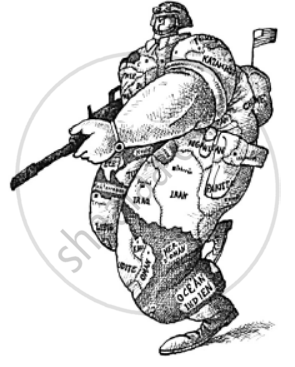Advertisements
Advertisements
प्रश्न
What was Shock Therapy? Was this the best way to make a transition from communism to capitalism?
उत्तर
Shock Therapy was a painful process of transition from an authoritarian socialist system to a democratic capitalist system. This transformation system was influenced by the world bank and the IMF in Russia, Central Asia and East Europe. Though it varies in intensity and speed amongst the former second world countries but its direction and features were quite similar.
This was not the best way to make a transition from communism to capitalism due to following drawbacks:
- Russia, the large state controlled industrial complex lost about 90 per cent of its industries through sales to private individuals and companies
- It created “the largest garage sale in history” which led virtual disappearance of entire industries for the restructuring was carried out by market forces in place of government owned policies. Hence, industries were undervalued and sold at throwaway prices.
- It systematically destroyed old system of social welfare.
- The value of ‘ruble’, the Russian currency, declined dramatically due to high rate of inflation and real GDP of Russia also declined between 1989 to 1999.
- The withdrawal of government subsidies pushed large sections of society into poverty and it emerged mafia to start controlling many economic activities.
- Privatisation led to new disparities which divided Russia between rich and poor people creating economic inequality.
- Hence, Shock Therapy brought ruin to economies and disaster upon the people of entire region.
APPEARS IN
संबंधित प्रश्न
Shock Therapy is a phenomenon associated with ______
The term 'the largest garage sale in history' is associated with ______
Study the following diagram and answer accordingly.

What message does this cartoon give to the international community?
Read the following passage and answer accordingly.
Economist Jeffrey Sachs is widely associated with shock therapy. He developed a plan of shock therapy for post-communist Poland in 1990, for post-communist Russia in 1992, and several other countries, including Bolivia and Chile.
Bolivia, in particular, in 1985, had success as a result of shock therapy in ending a period of hyperinflation.
Poland also initially seemed to benefit from shock therapy as inflation was controlled, but it saw a sharp rise in unemployment that peaked at 16.9%.
Sachs did not like the term shock therapy, which he said was coined by the media and made the reform process sound more painful than it was.
In Russia, neo-liberal shock therapy did not produce favourable outcomes. Shock therapy was applied swiftly and in large scale, as opposed to how it was applied to other nations.
Almost all of Russia’s industries were undervalued and sold to private individuals and companies, with most acquired by a few Russian oligarchs.
With limited government intervention, most industries disappeared. The Russian currency declined, causing high inflation and the erosion of most citizens’ savings. Unemployment increased drastically, and government subsidies were removed, further pushing Russian families into poverty.
Which country benefited from Shock therapy in 1985?
Read the following passage and answer accordingly.
Economist Jeffrey Sachs is widely associated with shock therapy. He developed a plan of shock therapy for post-communist Poland in 1990, for post-communist Russia in 1992, and several other countries, including Bolivia and Chile.
Bolivia, in particular, in 1985, had success as a result of shock therapy in ending a period of hyperinflation.
Poland also initially seemed to benefit from shock therapy as inflation was controlled, but it saw a sharp rise in unemployment that peaked at 16.9%.
Sachs did not like the term shock therapy, which he said was coined by the media and made the reform process sound more painful than it was.
In Russia, neo-liberal shock therapy did not produce favourable outcomes. Shock therapy was applied swiftly and in large scale, as opposed to how it was applied to other nations.
Almost all of Russia’s industries were undervalued and sold to private individuals and companies, with most acquired by a few Russian oligarchs.
With limited government intervention, most industries disappeared. The Russian currency declined, causing high inflation and the erosion of most citizens’ savings. Unemployment increased drastically, and government subsidies were removed, further pushing Russian families into poverty.
What happened in Poland after the initial success of the shock therapy?
Match the following:
| (i) Mikhail Gorbachev | (1) Successor of the USSR |
| (ii) Shock Therapy | (2) Military Pact |
| (iii) Russin | (3) Introduced reforms |
| (iv) Boris Yeltsin | (4) Economic model |
| (v) Warsaw | (5) Present of Russia |
In the following statements, features that distinguish the Soviet economy from that of a capitalist country like the US are given. Choose which of these statements is/are true?
- There was an absence of unemployment in the Soviet Union.
- Land and productive assets were owned by the state only.
- Soviet Union industries produced every domestic product from pins to cars, whose quality might not match that of the west technology.
Shock Therapy is a phenomenon associated with ______.
Which among the following developmental model had least supporters in India?
